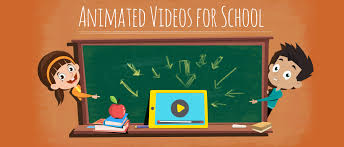In today’s evolving educational landscape, teachers are increasingly turning to unconventional resources to engage young minds. Among these resources, kids animated shows have emerged as powerful educational tools that transcend mere entertainment. The colorful characters, engaging storylines, and accessible formats make these shows particularly effective at capturing children’s attention in ways that traditional teaching methods sometimes cannot. This strategic alliance between education and entertainment represents a significant shift in pedagogical approaches.
The integration of animated content into lesson plans allows teachers to connect with students on familiar ground. Children who might struggle with conventional teaching methods often respond positively when their favorite characters demonstrate problem-solving or explore new concepts. Educational psychologists have noted that this connection creates neural pathways that enhance retention and comprehension, making learning both more effective and enjoyable. Teachers who embrace these methods report higher engagement levels and improved classroom dynamics.
Research conducted by the Educational Media Foundation reveals that students exposed to curriculum-aligned animated content demonstrate a 23% improvement in concept retention compared to those taught using only traditional methods. This statistic highlights the potential of thoughtfully selected animated shows to reinforce learning objectives across multiple subjects. From mathematics to social studies, animation offers versatile applications that can be tailored to diverse learning needs and classroom environments.
The benefits extend beyond academic achievement. Many educators report that animated shows provide excellent contexts for discussing complex social and emotional topics. Characters facing challenges, making mistakes, and demonstrating resilience offer valuable teaching moments that help children develop critical thinking and emotional intelligence. These soft skills, often challenging to teach through conventional methods, find natural expression through well-crafted animated narratives.
Critics sometimes express concern that screen-based learning might replace rather than supplement teacher-led instruction. However, effective integration models position animated content as complementary tools rather than substitutes for professional guidance. The teacher’s role evolves to include media literacy instruction, helping students become critical consumers of content while extracting educational value from their viewing experiences.
Professional development programs now frequently include modules on effectively incorporating media into classroom activities. These training sessions equip educators with strategies for selecting age-appropriate shows, designing accompanying activities, and evaluating learning outcomes. Organizations like the International Society for Technology in Education offer specialized certifications for teachers skilled in digital content integration.
Parents represent essential partners in this educational approach. When teachers communicate about the purposeful use of animated shows in the classroom, families can extend these learning opportunities at home. This school-home connection creates consistency and reinforces educational objectives across different environments, maximizing the impact of both formal instruction and entertainment-based learning.
Technology accessibility remains a challenge in some educational settings. Schools with limited resources may struggle to incorporate digital content effectively, potentially widening the educational opportunity gap. Addressing these disparities requires systemic solutions, including funding allocations that prioritize equitable access to educational technology and digital content across diverse communities and economic backgrounds.
Looking ahead, emerging technologies promise even more interactive experiences that blur the boundaries between education and entertainment. Augmented reality applications based on beloved animated characters offer immersive learning environments that respond to individual student needs and preferences. Teachers pioneering these approaches report unprecedented levels of student motivation and conceptual understanding.
The future of education likely involves increasingly sophisticated partnerships between professional educators and media content. As research continues to validate the effectiveness of these approaches, teacher training programs will need to evolve to prepare future educators for classrooms where animation serves as a core instructional strategy rather than an occasional supplement or reward.
Ultimately, the thoughtful integration of animated shows into educational contexts represents not a concession to children’s entertainment preferences, but rather a sophisticated recognition of how modern learners engage with information. Teachers who master this integration demonstrate professional adaptability while maintaining their essential role as guides, interpreters, and facilitators of children’s intellectual and social development in an increasingly media-rich world.

